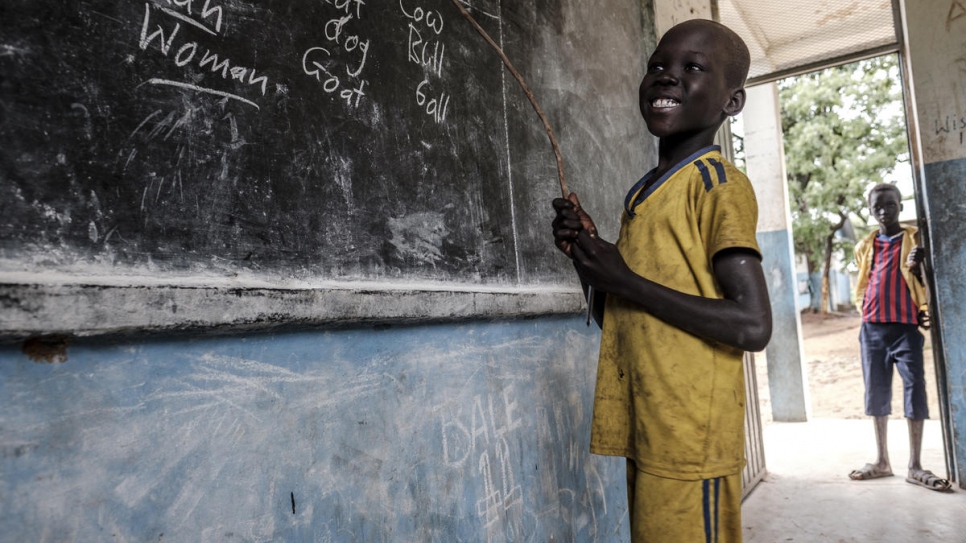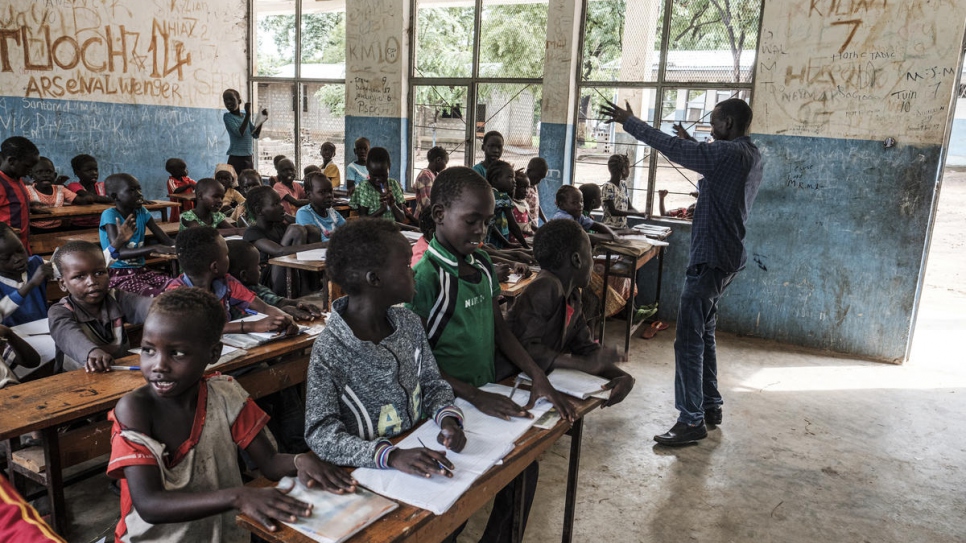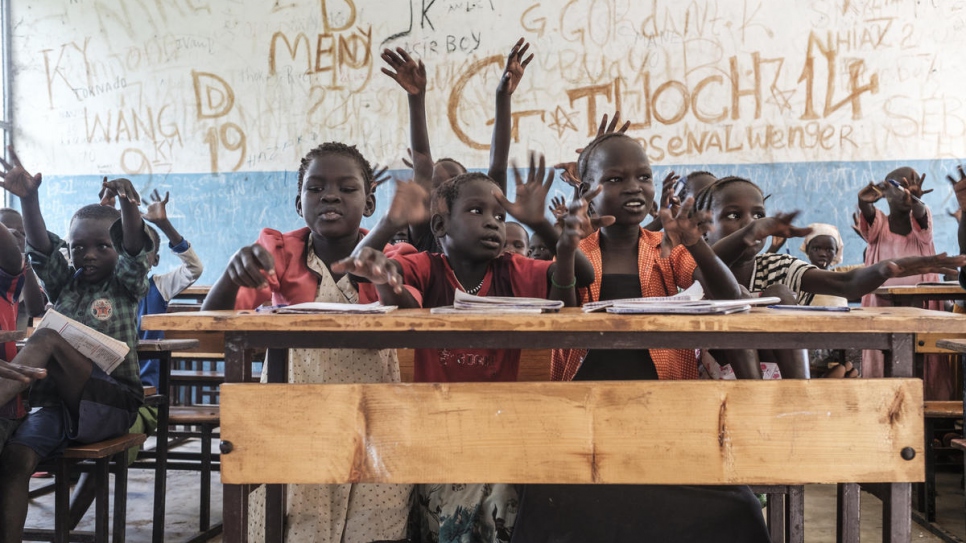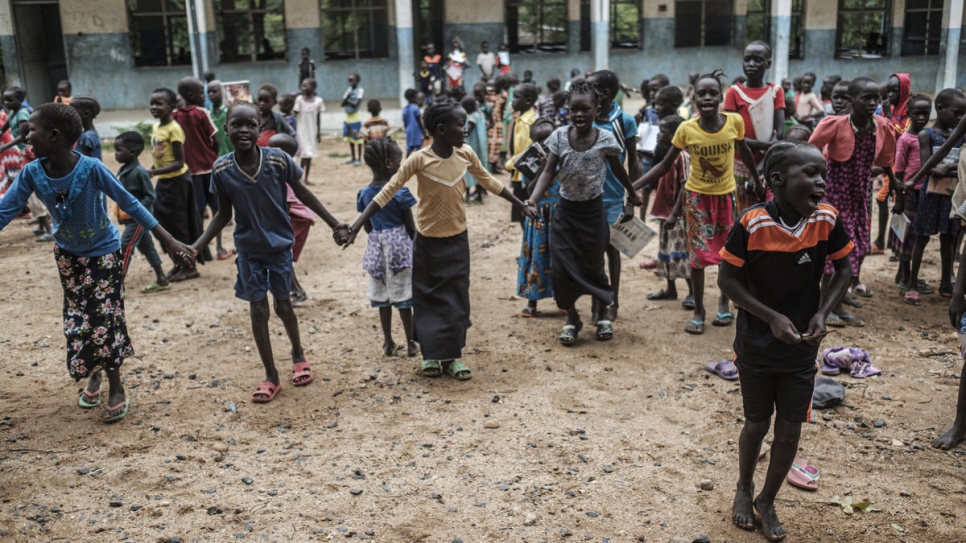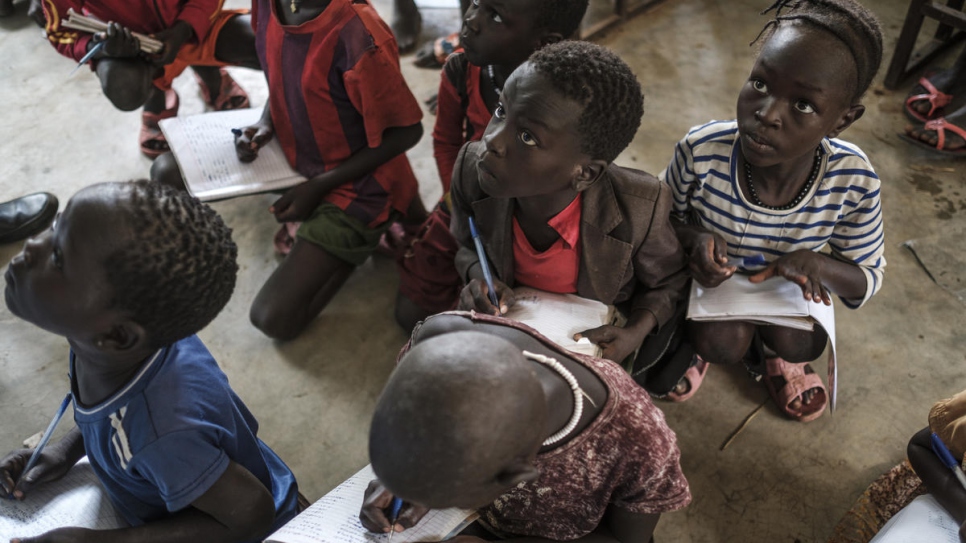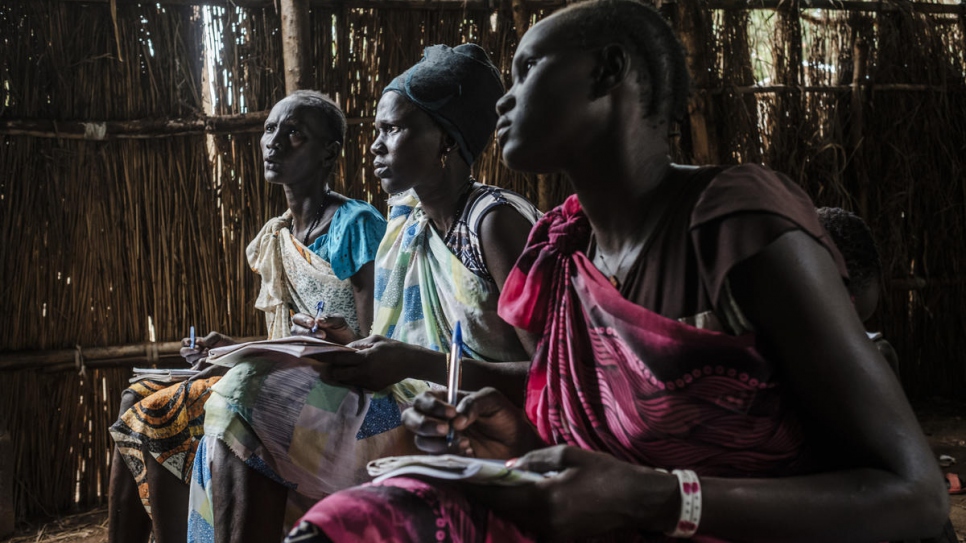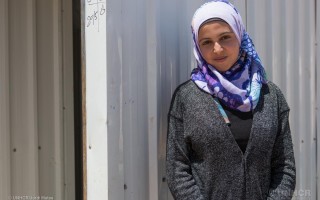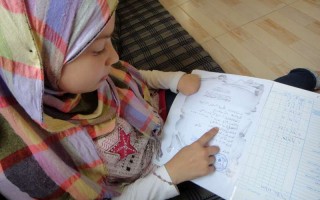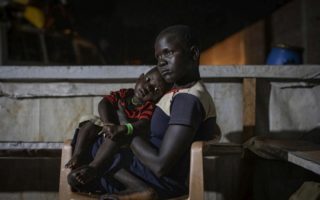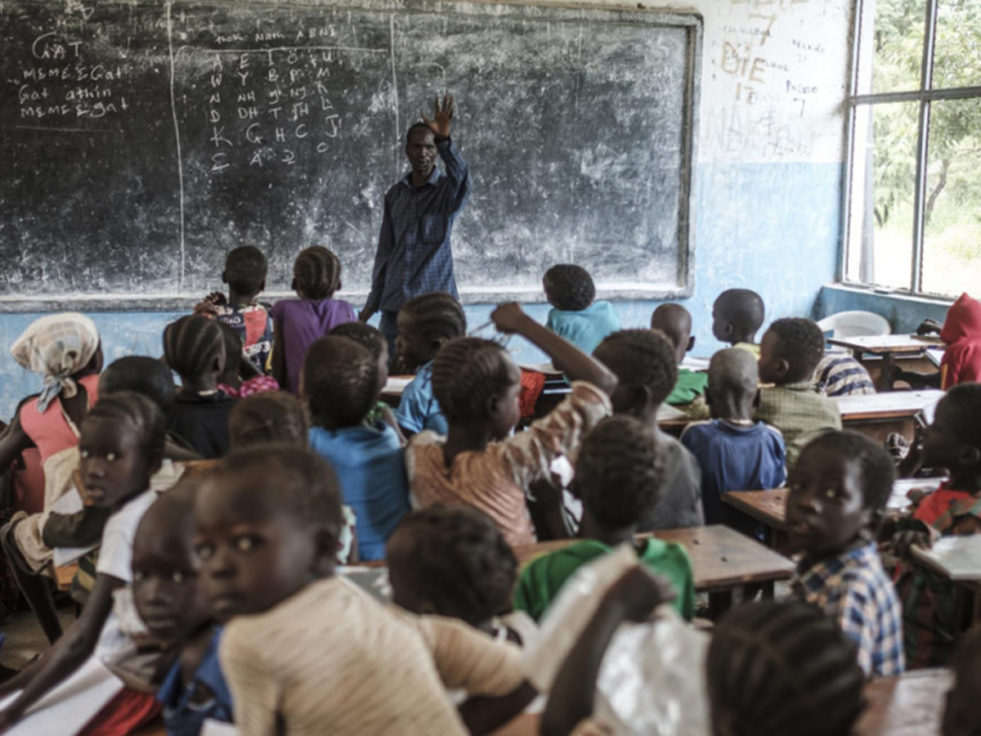
Refugee teacher Koat Reath gives a class in a school in Jewi Refugee Camp in Gambella, Ethiopia. He uses music to keep over 100 class mates interested. © UNHCR/Eduardo Soteras Jalil
Classes are overcrowded, there are not enough textbooks, but Koat Reath does not complain. A dedicated refugee teacher, he will do anything to improve his pupils’ lives.
The chorus of children’s voices coming from teacher Koat Reath’s classroom grows louder and louder, threatening to drown out other classes at his primary school in Jewi camp for South Sudanese refugees in western Ethiopia.
The 41-year-old has his pupils on their feet, clapping and reciting the alphabet in Nuer, their native tongue, followed by a few phrases that are sung with gusto in English. He believes children learn better when their lessons are lively and fun.
With almost a decade of teaching under his belt, Koat knows a thing or two about holding young students’ attention – though this can be difficult in Jewi where more than 100 children are crammed into one classroom at any time. Luckily, his energy levels easily match those of the five- to 15-year-olds in his class.
“I use song so that they have fun and don’t feel bored.”
“As you can see these are children. Teaching children is not easy. I use song so that they have fun and don’t feel bored … That’s the way I get my message across,” said Koat, whose sometimes stern face belies his warmth and enthusiasm for education.
Koat has spent the summer break providing extra classes to his students under an initiative by Plan International and other partners of the UN Refugee Agency, UNHCR to help children catch up on schooling they missed because of fighting in South Sudan.
The father of five shares much more than a love of learning with his young pupils. Like them, Koat is also a victim of a war that has made refugees of more than two million South Sudanese. He and his family fled to Ethiopia in 2015 after their home in Jonglei state was burned to the ground.
South Sudan’s conflict has had a particularly devastating impact on children. In Jewi camp, which is home to 54,000 South Sudanese refugees, as many as two-thirds are children. Not only have they lost their homes and seen their relatives killed, but years of violence have also prevented them from having and education. Some never had a chance to go to school in the first place and many who did have dropped out altogether.
Painfully aware of the disadvantage the children face, Koat and his colleagues are determined to do what they can to help close an education gap which means that only two-thirds of South Sudanese children in Ethiopia have access to primary school. In addition, the vast majority – 86 per cent — do not and cannot continue on to secondary school.
“We are here today because we want to teach our children how to be the champions of tomorrow. If they are not taught well, they will not succeed. If they are taught well, they will be the future presidents, the future doctors, the future pilots of South Sudan,” Koat said.
However, the shortage of school rooms, qualified teachers and teaching material present major obstacles to accessing an education for South Sudanese refugee children. Students learn in their native language, Nuer and;also learn English – while South Sudanese teachers work to adapt to the Ethiopian curriculum.
Unlike Koat, many quit saying that the 805 birr (US$27) they receive monthly as an incentive to teach is not enough.
Despite these difficulties, Koat remains undaunted.
In the afternoons, he leaves the clamour of his primary school pupils and heads over to a makeshift school where he offers private tuition to adult students for 10 birr each (US$0.34) a month. The students clubbed together to build the school, which has straw walls and a tarpaulin roof, and leaks badly during the rains.
Inside its cool interior, there is a quiet air of concentration as 20 or so adults, including a 64-year-old grandfather and a young mother with her baby in a Moses basket by her feet, make notes from the chalkboard.
“If you commit yourself to your people, it’s no problem.”
“I am tired,” Koat said of his double shift. “But if you commit yourself to your people, it’s no problem. I’m teaching these children to be the future of South Sudan. They will change the bad things in South Sudan and they will do a lot of good.”
Patrick Kawuma, the head of UNHCR’s Gambella sub-office, worries about the prospects for South Sudanese youths who are growing up without an education.
“You end up with so many young people who are idle and have nothing to do in the camps and these ones can easily be exploited by any interested groups,” he said, adding, “the greatest need for these children is education, there is no question about that.”
For more information on refugee education read UNHCR’s 2019 education report Stepping Up: Refugee Education in Crisis. The report shows that as refugee children grow older, the barriers preventing them from accessing education become harder to overcome: only 63 per cent of refugee children go to primary school, compared to 91 per cent globally.
Originally published on UNHCR on 4 October 2019

